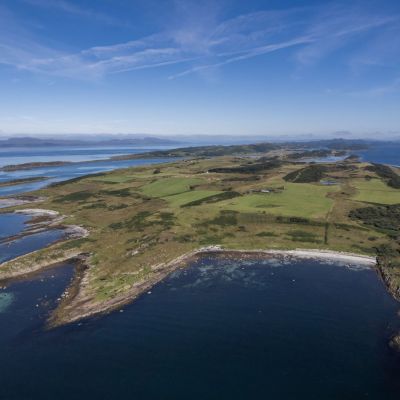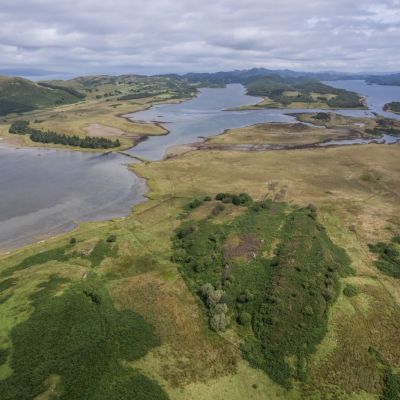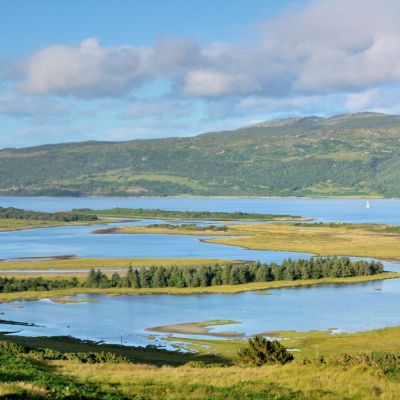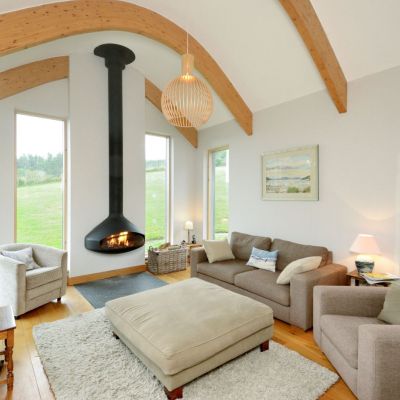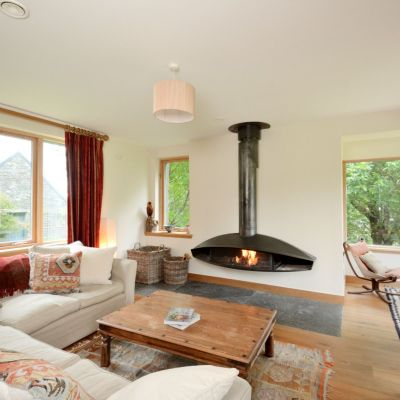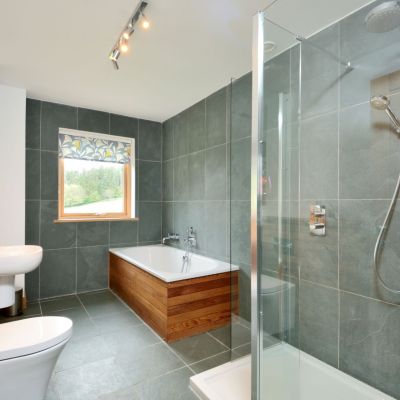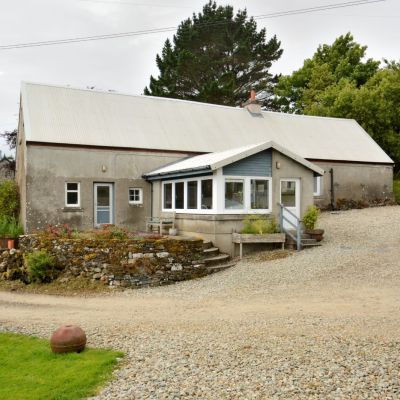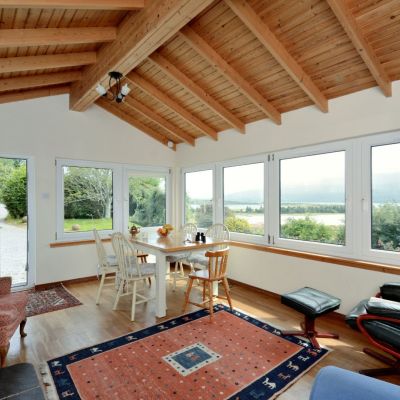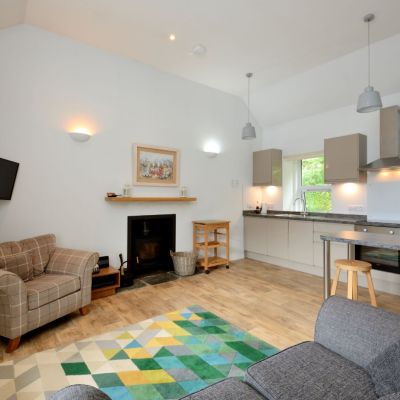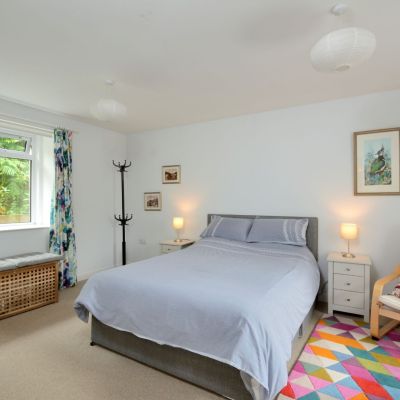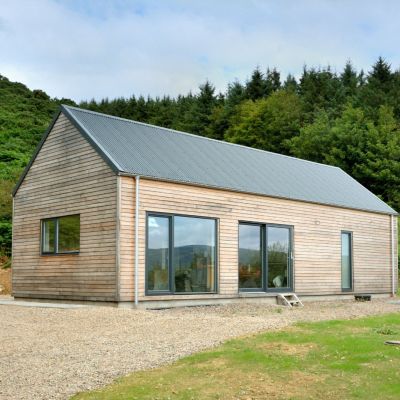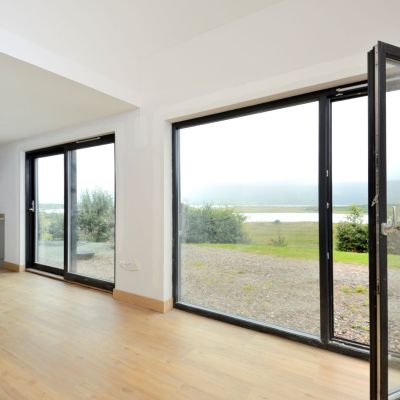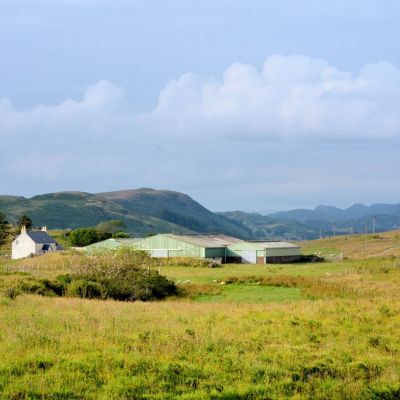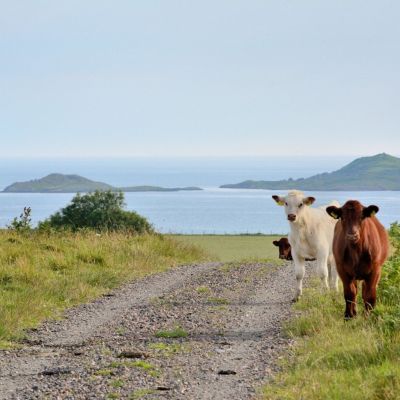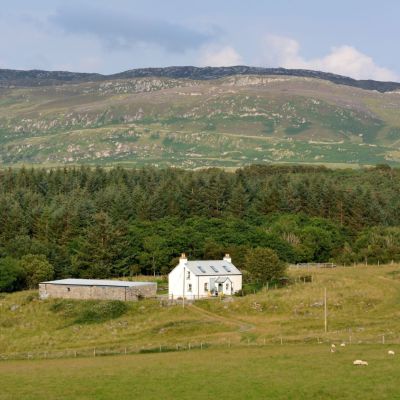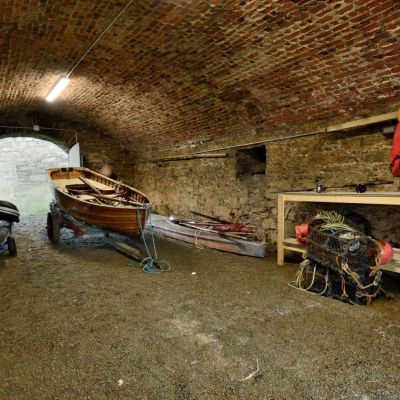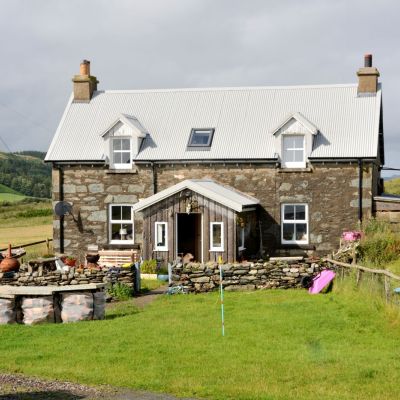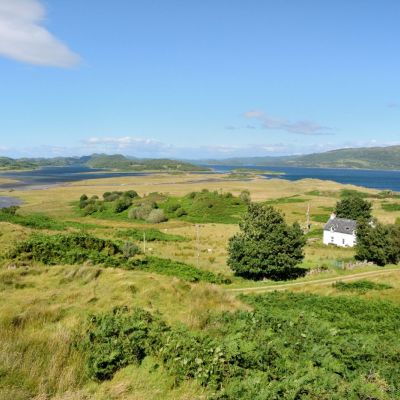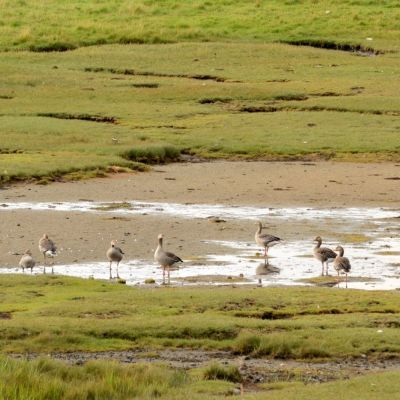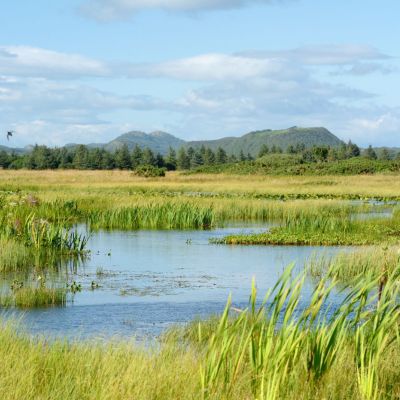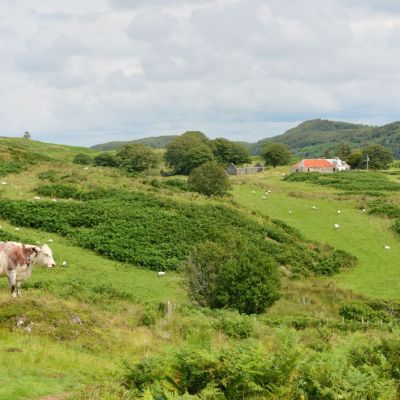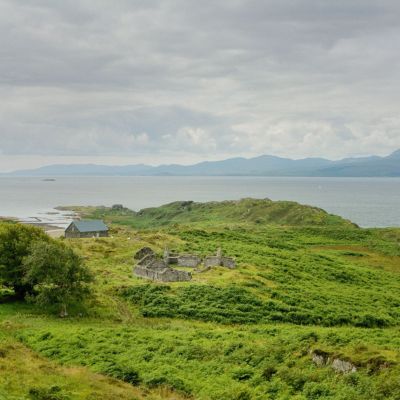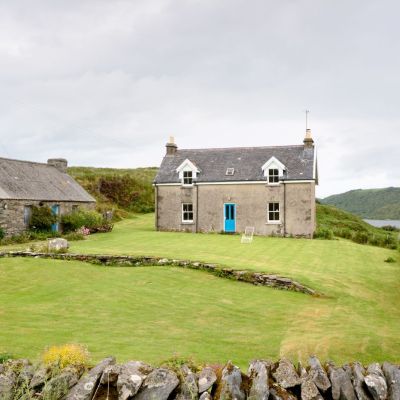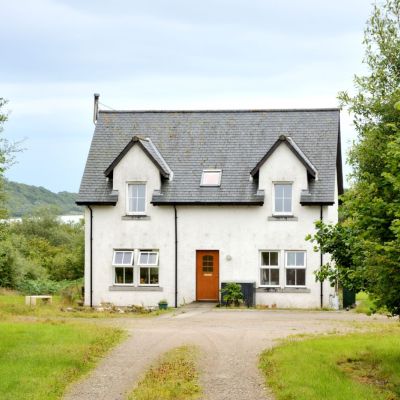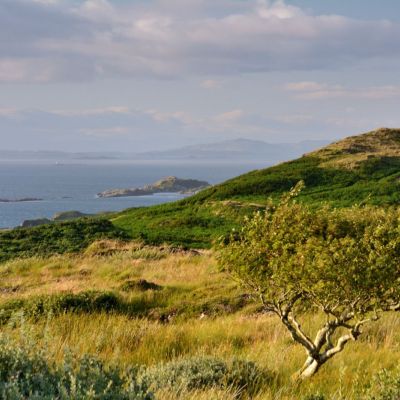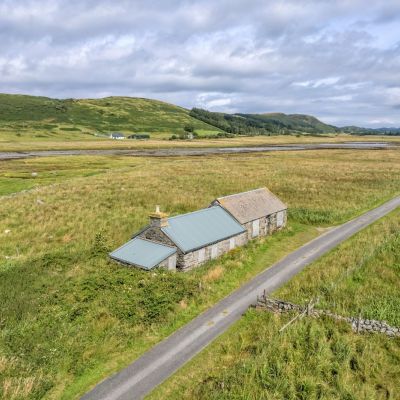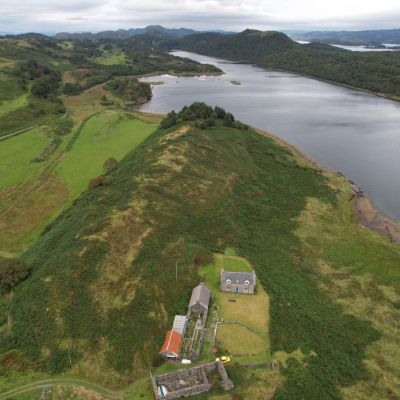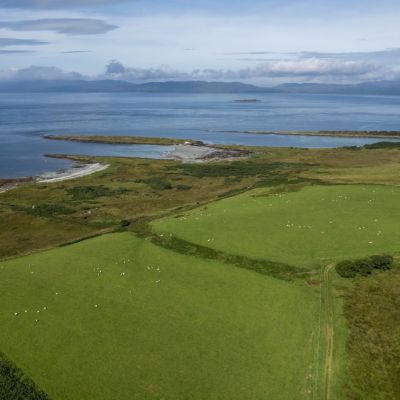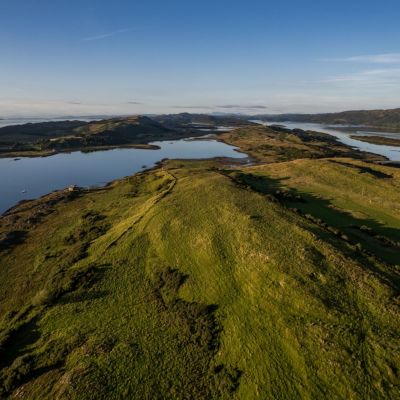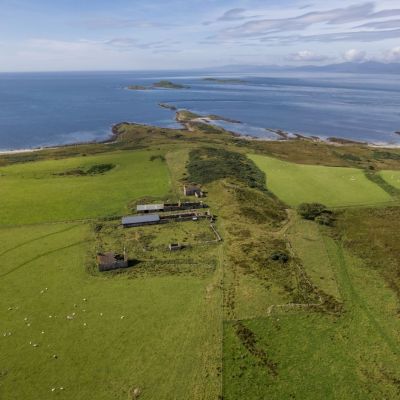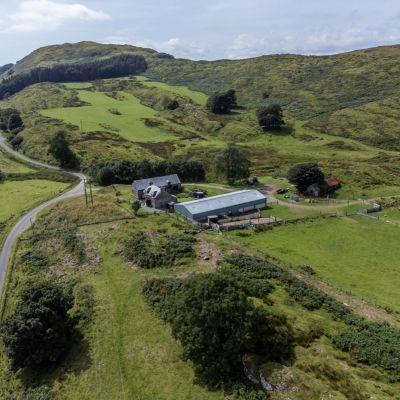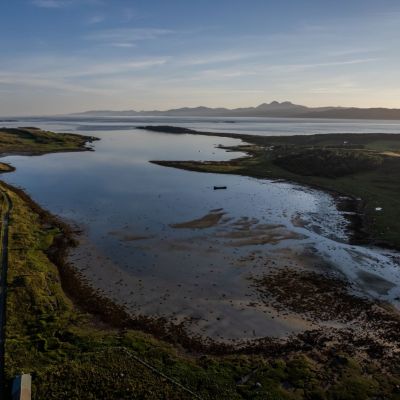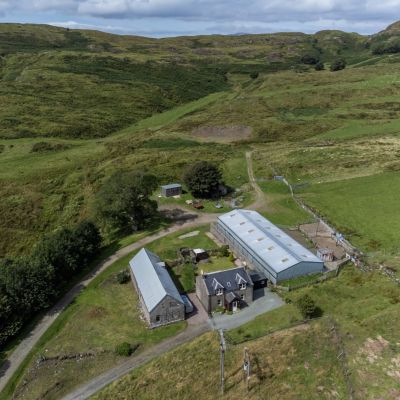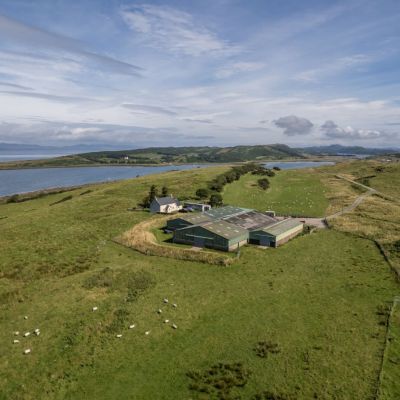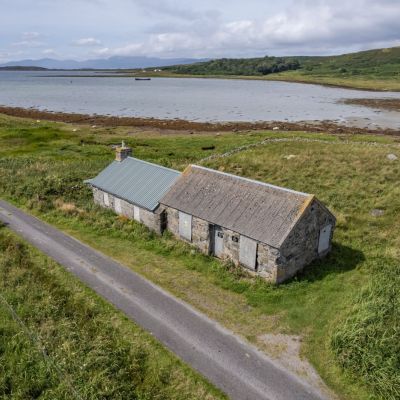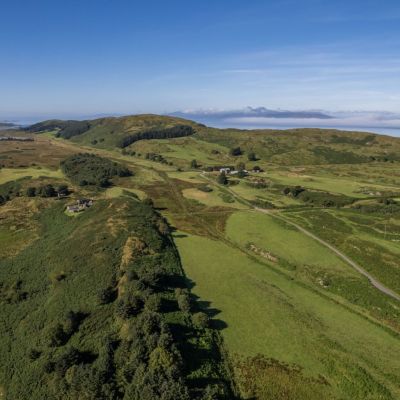Lochgilphead Argyll PA31 Tayvallich
- Offers Over
- £10,465,000
- D Council Band
CLOSING DATE: Noon 17th November 2022
CLOSING DATE: Noon 17th November 2022
Residential Property Whilst there is no principal mansion house or lodge at Tayvallich Estate, the existing residential portfolio includes 13 houses and cottages which are occupied under varying forms of tenure including service occupancies by employees, residential leases and short term holiday lets.
The most substantial dwelling – Coshandrochaid House, occupied by the owners of the estate when in residence – is an imaginatively designed two-storey contemporary house completed in 2011 and built on the site of an old stone farm building, re-using much of the original stone, with outstanding views over the southern end of the peninsula.
With the notable exceptions of Keeper’s Cottage (a 2-bedroom cottage completed in 2022) and Hazel House (a 4-bedroom property completed in 2009), the majority of houses and cottages on the estate are traditional 1½-storey stone and pitched roof dwellings with many of them occupying dramatic positions with outstanding views.
As part of a comprehensive programme of property repairs and improvements during the tenure of the current owners, the housing stock on the estate is in a generally excellent state of condition and repair with a number of houses having been modernised and upgraded in recent years including several which have been re-roofed. An estate foreman is employed on a full time basis. A joiner/carpenter to trade, he undertakes routine maintenance of each of the properties and was largely responsible (with the support of one of the tenants on the estate who is also a highly skilled tradesman) for the recent construction of Keeper’s Cottage. His wife – together with the wife of one of the farm employees work on a part-time basis providing housekeeping and laundry services for the three holiday cottages on the estate (Coshandrochaid Cottage, Kate’s Cottage and Keeper’s Cottage).
Potential Development Opportunities Situated throughout the estate there are various sites of former dwellings and buildings which are in varying states of repair (ranging from redundant but wind and watertight to the stone remains of former dwellings/buildings) and with varying quality of access (ranging from beside the public road to accessible by ATV only). Some of these sites and former buildings have greater capacity for potential development than others and there are no existing planning applications nor consents for their development. Some of these sites are offered as independent lots and others form part of larger lots being offered for sale.
All prospective purchasers with an interest in the development of any of these sites are advised to consult local planning policy (the adopted Argyll & Bute Local Development Plan 2015 and the emerging Local Development plan 2 – subject to Examination at the time of publishing these particulars). This planning policy guidance explains that there is a general presumption in favour of small scale, sustainable development (including residential and tourist-related uses) within Countryside Zone areas that will not adversely impact on the status and integrity of the surrounding Knapdale National Scenic Area and Sites of Special Scientific Interest/Special Areas of Conservation.
In particular, there is an emphasis on the efficient reuse of derelict/vacant/redundant land and buildings; avoiding locally important good quality agricultural land; ensuring sensitive and carefully considered forms of design in terms of scale and massing; respecting the character and special qualities of both the immediate and wider surrounding landscape; and ensuring effective and efficient infrastructure provision including water and drainage and safe access.
Those parties contemplating the development of any of the sites on the estate are advised to seek independent and specialist advice in relation to these sites as part of their due diligence in advance of submitting any offer.
Farming and Agriculture Varying in altitude from sea level to about 109 metres (363 feet) above sea level at the highest point on the estate, Tayvallich Estate has a mild Gulf Stream climate with average annual rainfall of about 1,800mm (71 inches).
Comprising brown soils and mineral podzols and with an agricultural capability classified under Scotland’s Soils national soil survey as comprising mostly grade 5.3 (land capable of use as improved grassland) and 6.1 (land capable of use as rough grazing with high proportion of palatable plants), the best of the land – which is grade 4.2 in classification (capable of producing a narrow range of crops, primarily on grassland with short arable breaks of forage crops and cereal) is at the south end of Danna Island at the foot of the estate.
Having been farmed for many years under four separate tenancies, the owners have progressively taken the farming at Tayvallich back in hand to the extent that the entire estate is now farmed on an in-hand basis as a single enterprise operating on a commercial footing.
The current farming system is based on the production of store lambs from a breeding flock of about 1,000 Scottish Blackface ewes together with the production of suckled calves from a herd of about 60 Beef Shorthorn crossed with Highland Cattle cows/heifers which are put to either a Beef Shorthorn or Whitbred Shorthorn bull.
As a result of the environmental importance of the Tayvallich peninsula/estate together with its various designations as Sites of Special Scientific Interest (SSSI) and Special Areas of Conservation (SAC), the practical operations of the farm including location and timing of grazing pressure together with any cultivations and/or mowing are carried out in close consultation with NatureScot (previously Scottish Natural Heritage) with whom the estate has an excellent working relationship.
A shepherd and stockman are employed on a full-time basis with both occupying estate-owned properties on a service occupancy basis. The principal range of buildings serving the farm is at New Danna at the southern end of the estate with an additional range at Barrahormid in the centre of the estate. There are extensive cattle and sheep handling facilities and the infrastructure throughout the estate (including fences, gates and water troughs) is in good condition having benefitted from substantial investment in recent years.
As a result of the mild climate, the sheep lamb and the cattle calve outside with the latter being housed under cover on the estate between November and March each year. Whilst some of the fields are capable of growing crops of hay and silage, current practice (based on agreed management in accordance with the environmental designations) is for winter fodder to be purchased elsewhere and brought in.
Wildlife, Environment and Natural Capital The combination of geology, topography, coastline, climate and vegetation marks out the Tayvallich peninsula as being quite unlike any other part of the Scottish mainland and, in a country globally famed for the variety of its landscape and natural beauty, Tayvallich Estate occupies one of the most majestic and unspoilt landscapes in Scotland.
Such is the prestige of the landscape, geology and natural history, Tayvallich is subject to five different SSSIs and three SACs. The richness and variety of the peninsula is well described in the listing designation notes published by NatureScot for the Tayvallich Juniper and Fen SSSI as follows:
Tayvallich Juniper and Fen Site of Special Scientific Interest (SSSI) lies adjacent to the village of Tayvallich on the Tayvallich peninsula, approximately 13 km west of Lochgilphead. The underlying geology of the site – dominated by Dalradian limestone schists, phylites and quartzites – form steep north-east to south-west orientated ridges and valleys which support a rich mosaic of habitat types. Of particular conservation importance are the species-rich fen communities, juniper heath and fragments of native ancient oak woodland. The SSSI is also one of the best sites in Scotland for its assemblage of dragonfly species. Along the steep drier slopes of the ridges ancient oak woodland occurs. Mature oak trees dominate the canopy, while birch and hazel are frequent in the understory with rowan and holly occurring occasionally. Due to their proximity to the Atlantic Ocean the woodlands provide appropriate conditions for several rare oceanic bryophytes including Epipterygium tozeri and Cephaloziella turneri at the northern limit of their range as well as the endemic Fissidens celticus. An important feature of the Tayvallich woodlands are the juniper Juniperus communis scrub communities which grow across the peninsula from the west coast to the adjacent Linne Mhuirich SSSI, primarily on the dry south-east facing ridges. The growth form and extent of the juniper scrub on this site is highly unusual in Argyll. The diversity of the fen communities is influenced by the inflow water chemistry. The base-rich areas support rich dioecious sedge – common butterwort Carex dioica – Pinguicula vulgaris mires, while near the sea the rich fens are characterised by the presence of black bog rush Schoenus nigricans. Star sedge – bog moss Carex echinata – Sphagnum recurvum/auriculatum communities are typical of the poor fens in the less nutrientflushed areas. Where base-rich water collects in the valley basins bottle sedge-moss Carex rostrata – Calliergon cuspidatum areas have developed. In some sites these grade into a rich type of Phragmites swamp or into an open water vegetation system with stoneworts Charophytes, least bur-reed parganium minimum and floating rafts of bogbean Menyanthes trifoliata with marsh cinquefoil Potentilla palustris. The valley mires and lochans are also important for their damselfly and dragonfly populations. Eleven species are known to breed within the SSSI including the unusual keeled skimmer Orthetrum coerulescens.
With the rugged and wave-lashed Atlantic coastline of the Sound of Jura forming the western boundary; a combination of Loch Sween, the sheltered lagoon of An Grianan and the inlet of Linne Mhuirich forming the eastern boundary and the islands of Ulva and Danna (reached by vehicular causeway) lying off the southern end of the peninsula, Tayvallich Estate incorporates landscapes and ecosystems which vary significantly in appearance and composition. A wide variety of bird, mammal and plant life – including many rare and unusual resident and migratory species – abound throughout the estate.
For an extensive description of the range of wildlife that can be encountered in the Tayvallich area, we recommend the Wildlife pages of the Tayvallich Village website – www.tayvallich.com/abouttayvallich/wildlife.
In terms of natural capital, the open hill land and areas of rough grazing (many of which are already partially wooded with native species) lend themselves to further native afforestation, subject to consultation with NatureScot and Forestry & Land Scotland which may offer the potential for future carbon sequestration and accreditation under the Woodland Carbon Code.
Sport and Amenity Whilst the owners have not conducted traditional field sports in terms of reared or wild game shooting and/or wildfowling, the estate has historically been run as a sporting estate and there is extensive scope for both reared and wild game shooting at Tayvallich, if desired. The native woodlands and the maritime climate are favoured by migratory woodcock during the winter and the variety of wildfowl and geese attracted during the winter months offers the opportunity for coastal wildfowling and flighting into inland ponds and splashes.
There is a population of three different species of deer (roe, red and sika) which are culled at present in accordance with the management objectives of the SSSIs, rather than as a sporting quarry or source of income. The estate has a recently-built larder and chiller facility at Barrahormid with the annual cull having been undertaken under the supervision of the estate foreman.
The pair of jetties at Port-nan-Gallan together with an excellent boathouse provide access to the sea for craft of varying size. The opportunities for exploration – either of the local coastline by kayak or canoe or of the wider Inner Hebrides (and as far afield as the Northern Irish coast and its islands) by sailing boat or motorised craft – are virtually endless. The snorkelling, spear fishing, diving for shellfish, sea fishing by rod and line and crab and lobster potting to be enjoyed from Tayvallich is of world class and amongst the principal attractions of the estate.
A full description of each lot can be found within the brochure but is summarised as:
Lot 1 - Drimnagall Estate (About 1,685.95 acres)
A mixed-use estate featuring a 3-bedroom farmhouse and range of farm buildings; several redundant dwellings/buildings with exciting development opportunities and land comprising extensive areas of open native woodland together with some enclosed conifer plantations and livestock grazing. Several small islands in the Sound of Jura are also included. Includes in-hand farming, extensive natural capital and opportunities for traditional field sports.
Lot 2 - Turbiskill Farmhouse (About 1.42 acres)
A traditional 1½-storey house with 4 bedrooms. Includes an enclosed garden with adjoining outbuilding and a small enclosed field of pasture.
Lot 3 - Farm Building and Land at Turbiskill (About 32.05 acres)
A timber framed general purpose shed, with an expansive extent of open woodland, rough grazing and frontage to a sea inlet (Linne Mhuirich) providing the opportunity for future residential/tourism development with significant amenity.
Lot 4 - Hazel House (About 12.53 acres)
A modern house (completed 2009) with 2 reception rooms, 4 bedrooms and 2 bath/shower rooms. Spacious garden with summerhouse and about 10 acres of open woodland, rough grazing, and approximately 500 metres of shoreline frontage to Linne Mhuirich including the site of a former jetty.
Lot 5 - Land at South Tayvullin (About 28.13 acres)
About 28 acres of open native woodland and approximately 600 metres of shoreline frontage to Linne Mhuirich.
Lot 6 - Kilmory (About 155.71 acres)
A traditional 1½-storey 2-bedroom house with picturesque outlook; outbuilding and redundant barn with potential for residential conversion. Open and enclosed native woodland, pasture and rough grazing and approximately 2km of coastline.
Lot 7 - Land at An Grianan (About 169.85 acres)
Rough grazing, marshland and woodland surrounding a tidal lagoon (An Grianan) which is an important habitat for a variety of migratory and resident waders and wildfowl along with several marine species including grey mullet, common dab and sea trout.
Lot 8 - Coshandrochaid (About 23.03 acres)
A stylish and beautifully finished contemporary house (completed 2011) with 4 bedrooms, 3 reception rooms; 3 bath/shower rooms and outstanding outlook; 3 further cottages (currently let as holiday accommodation) plus outbuildings together with about 20 acres of enclosed permanent pasture.
Lot 9 - The Old Smithy and Log Store (About 1.16 acres)
Derelict former blacksmith’s forge and adjacent former log store with potential for residential development, subject to planning.
Lot 10 - Ulva Mhor (About 155.72 acres)
A traditional 1½-storey 3-bedroom house with magnificent outlook over Loch Sween; outbuildings with potential for residential conversion; open native woodland, rough grazing and marshland; frontage to both Linne Mhuirich and Loch Sween including 2 small islands and the site of a former jetty.
Lot 11 - New Ulva (303.10 acres)
A traditional 1½-storey 3-bedroom house with useful range of outbuildings. Land comprising a combination of permanent pasture and rough grazing/open native woodland. In-hand livestock farming and coastal frontage to both Loch Sween and Loch na Cille.
Lot 12 - Ulva Old School House (0.66 acre)
Redundant former school with adjoining dwelling beside the sea and the public road with potential for residential development, subject to planning.
Lot 13 - Danna Island (811.56 acres)
An outstandingly scenic island estate comprising 3 existing dwellings; a spacious boathouse with 2 stone jetties; well-equipped range of farm buildings and the site of several redundant buildings/derelict dwellings with a majestic position and potential for exciting development/conversion, subject to planning. In-hand land comprising permanent pasture, rough grazing and both enclosed and open mixed-species woodland. Incorporating 5 small islands and approximately 8.6km of coastline, the island includes extensive natural capital alongside existing agricultural use and potential for traditional field sports.
This property has 3380.91 acres of land.
Situation
Introduction Tayvallich Estate is a mixed-use coastal estate occupying a little known, outstandingly picturesque and ecologically important peninsula with associated islands lying between the Sound of Jura and Knapdale peninsula on Scotland’s west coast. The estate incorporates a wide range of assets and attractions and, whilst currently managed as a single agricultural and residential estate with high regard to its environment and its people, the offering of Tayvallich Estate for sale in lots provides the opportunity for a dilution in the current land ownership of the peninsula and gives a variety of prospective land and property owners and managers the potential future stakeholding in this truly magnificent and somewhat undiscovered part of Scotland.
Situation Situated at the head of the Knapdale peninsula in Argyll on the west coast of Scotland, Tayvallich Estate occupies the majority of the Tayvallich peninsula – a ‘finger’ of terrain which incorporates some of the most geologically and ecologically important landscape in Scotland and runs southwest for about 15 miles from Loch Crinan at the north end to the southern tip of Danna Island where Loch Sween meets the Atlantic Ocean in the Sound of Jura.
Rich with cultural history and the remnants of ancient civilisation – the cross and remains of the church at Keills at the southern end of the peninsula dates from the 8th Century and there are many more recent vestigial settlements throughout the peninsula – the natural history of Tayvallich is of particular importance with both the estate and the peninsula being subject to three different Special Areas of Conservation (SAC) and five different Sites of Special Scientific Interest (SSSI).
Accessibility to the peninsula and the estate is by means of a single track public road with passing places which leads southwest from Bellanoch on the Crinan Canal between Cairnbaan and Crinan. The village of Tayvallich – a charming settlement and thriving community occupying the isthmus between Loch a’Bhealaich on the east side and Carsaig Bay on the Sound of Jura lies 7 miles from Bellanoch and 12 miles from Lochgilphead – the administrative centre of the region where Argyll & Bute Council is headquartered.
Tayvallich village includes a community-owned village shop and hotel with bar and restaurant. There is also a primary school in the village and an active Community Hall (a registered charity) which plays host to a variety of events throughout the year. The bay – Loch a’ Bhealaich – which the village overlooks, provides moorings for a number of yachts and boats with Tayvallich being a popular base from which to explore the Inner Hebrides and the wider west coast of Scotland. Between March and September, a passenger service operates from Tayvallich to Craighouse on the Isle of Jura – another of Scotland’s less frequented natural historical delights. Charter boats can also be hired from either Tayvallich or Crinan to enable further exploring and/or for wildlife watching or sea fishing.
An important centre of commerce, Lochgilphead provides a variety of retailers, suppliers and facilities including a supermarket, two garages/ petrol stations a 9-hole golf course; and a Community Secondary School with a range of facilities including swimming pool, leisure centre, gym and several sports pitches.
The closest airport with scheduled internal and international flights is at Glasgow (90 miles) which can be reached in around 2½ hours under normal traffic conditions. Small, fixed-wing private aircraft can be landed at Oban airport which lies 44 miles and about 1½ hours’ drive to the north.
In historical terms, the county of Argyll formed the major part of the kingdom of Dalriada, which is believed to have been settled by Gaels from Ireland with its capital at the fort of Dunadd near Lochgilphead. The county is strewn with remnant forts, castles and standing stones from this period which includes an ancient fort – Dun Mhuirich – a Scheduled Monument on the shore of Linne Mhuirich within Tayvallich Estate.
With its many islands, peninsulas and sea lochs, Argyll has thousands of miles of coastline and, as such, the sea is a feature of the working life and leisure time of its inhabitants.
The quality of sailing off the Argyll coast and Inner Hebrides is of world-renown. With the estate’s own boating facilities together with moorings in the bay at Tayvallich village and fully-equipped marinas further north at Kilmelford and Craobh Haven, as well as a boat yard in Crinan, Tayvallich Estate is perfectly placed for sailing enthusiasts to explore much of the west coast. The Northern Irish coast lies less than 50 miles off Danna at the southern end of the estate and is therefore also highly accessible – either for day trips or longer explorations given both appropriate weather conditions and vessel. With two jetties and an exquisite, barrel-vaulted boathouse at Port nan Gallan on Danna Island, the estate provides the opportunity for sea fishing, lobster and crab potting and a range of water sports. The sea fishing and lobster potting is of particular renown in the Sound of Jura and is a favoured pastime of the current owners.
With a large extent of forestry and woodland owned by Forestry & Land Scotland (formerly the Scottish Forestry Commission) at the northern end of the Tayvallich peninsula and elsewhere in this part of mid-Argyll, there is an almost endless choice of routes for walkers, cyclists and mountain bikers. There are also various coastal walks and Core Paths locally.
Another gem of the area is the Taynish National Nature Reserve which is owned and managed by Nature Scot (formerly Scottish Natural Heritage) and lies on the east side of Linne Mhuirich incorporating some of the most geologically and ecologically important landscape in Scotland. Adjoining Tayvallich Estate and renowned for its ‘temperate rainforest’ dominated by ancient oak woodland, there is a variety of waymarked trails enabling visitors to explore this magnificent Reserve.
With many islands to explore, mountains to climb, lochs to fish, pubs and restaurants at which to dine throughout Argyll, there is a fantastically diverse range of activities both on the estate itself and within a drive of an hour or so of Tayvallich.
Directions
Travelling from Glasgow take the A82 towards Tarbet and continue on the A83 passing through Inveraray until you reach Lochgilphead. After passing through Lochgilphead turn right at the roundabout onto the A816 following signs for Oban. After approximately 2 miles fork left onto the B841 at Cainbaan. Follow this road running parallel with the Crinan Canal for approximately 3 miles and then turn left on to the B8025 signposted for Tayvallich. Follow this road until reaching the village of Tayvallich. Continue through the village and follow this road bearing right and going uphill after passing the village hall on your left. This road leads through the heart of the estate with access to each lot leading directly from it. The main points of access to each lot will be marked with a sign.
For access to lots 10 to 13, turn left towards Ulva and Danna shortly after passing lot 9 (The Old Smithy and Log Store).
Read more- Virtual Viewing
- Map & Street View



























































